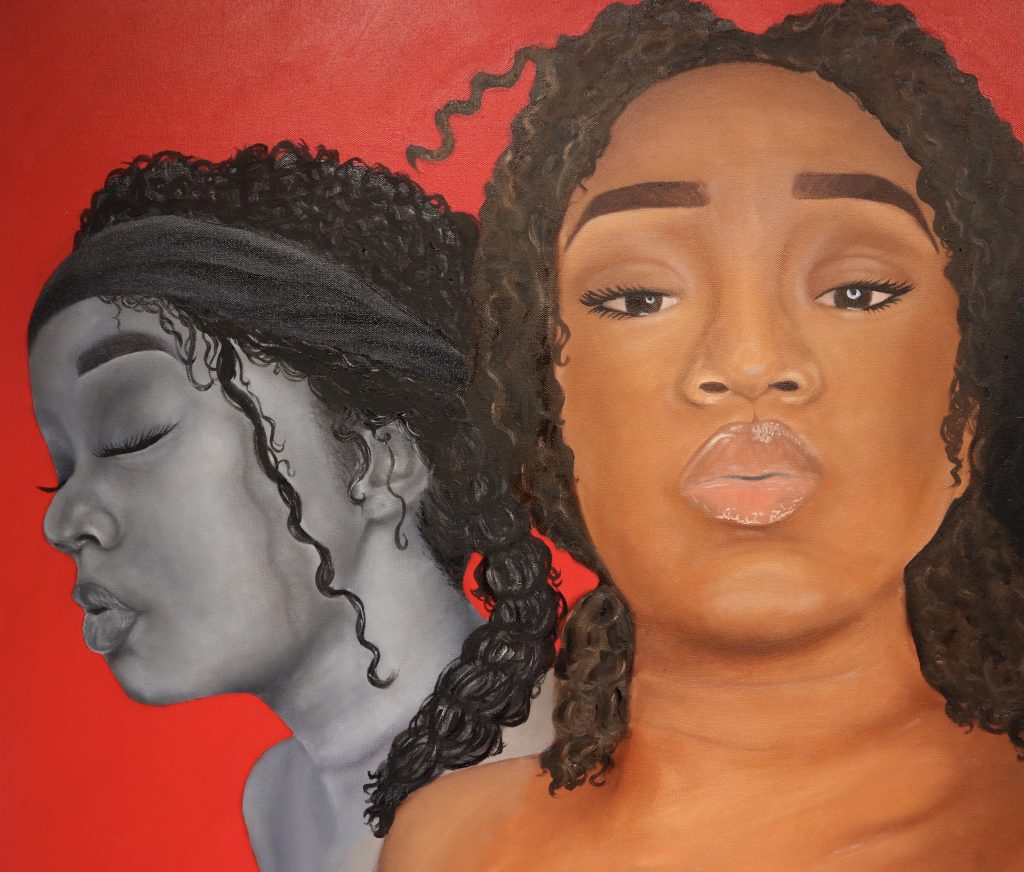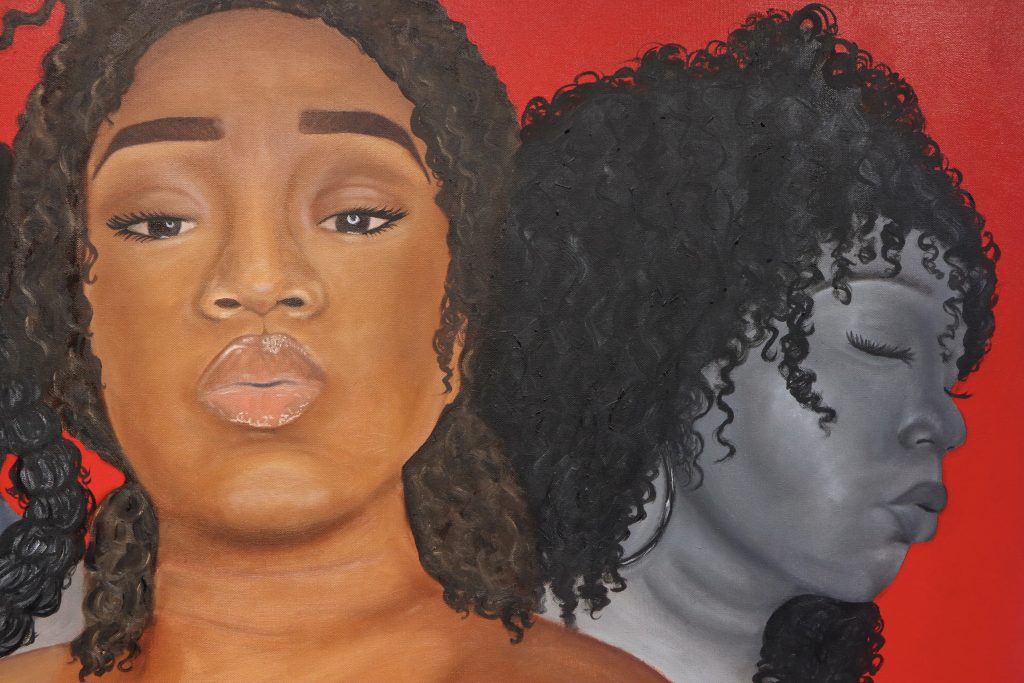Bio
 New York based artist, Destiny Arianna recently graduated from Bowdoin College, with a Bachelor of Arts in Africana Studies, Art History, and Visual Arts. Enamored with art from a young age, she started experimenting with black acrylic paint in her early teens. These early works focused on her identity a Black woman and depictions of blackness. After entering her first technical art classes during her sophomore year of college, she encountered a pedagogy that excluded Black portraiture. The gap in her artistic training led her to pursue the study of race in arts education. During Arianna’s time within Bowdoin’s Visual Arts program, she continued to learn from and rebel against that pedagogy. Taking the skills, she acquired through self-teaching Destiny Arianna continues to focus on depictions of Blackness in art. Over the past year, Arianna has used painting, photography, and collage to explore her Black and Indigenous identity, with a focus on land, lineage and language. Her works address the hypervisibility, visibility and invisibility of her racial and cultural identities. Arianna addresses the deeply rooted connection between the rich culture she was immersed in growing up and its relation to the violent history of her ancestry to reconstruct a narrative of beauty, resilience and survival in her work
New York based artist, Destiny Arianna recently graduated from Bowdoin College, with a Bachelor of Arts in Africana Studies, Art History, and Visual Arts. Enamored with art from a young age, she started experimenting with black acrylic paint in her early teens. These early works focused on her identity a Black woman and depictions of blackness. After entering her first technical art classes during her sophomore year of college, she encountered a pedagogy that excluded Black portraiture. The gap in her artistic training led her to pursue the study of race in arts education. During Arianna’s time within Bowdoin’s Visual Arts program, she continued to learn from and rebel against that pedagogy. Taking the skills, she acquired through self-teaching Destiny Arianna continues to focus on depictions of Blackness in art. Over the past year, Arianna has used painting, photography, and collage to explore her Black and Indigenous identity, with a focus on land, lineage and language. Her works address the hypervisibility, visibility and invisibility of her racial and cultural identities. Arianna addresses the deeply rooted connection between the rich culture she was immersed in growing up and its relation to the violent history of her ancestry to reconstruct a narrative of beauty, resilience and survival in her work
click on images for enlarged slideshow

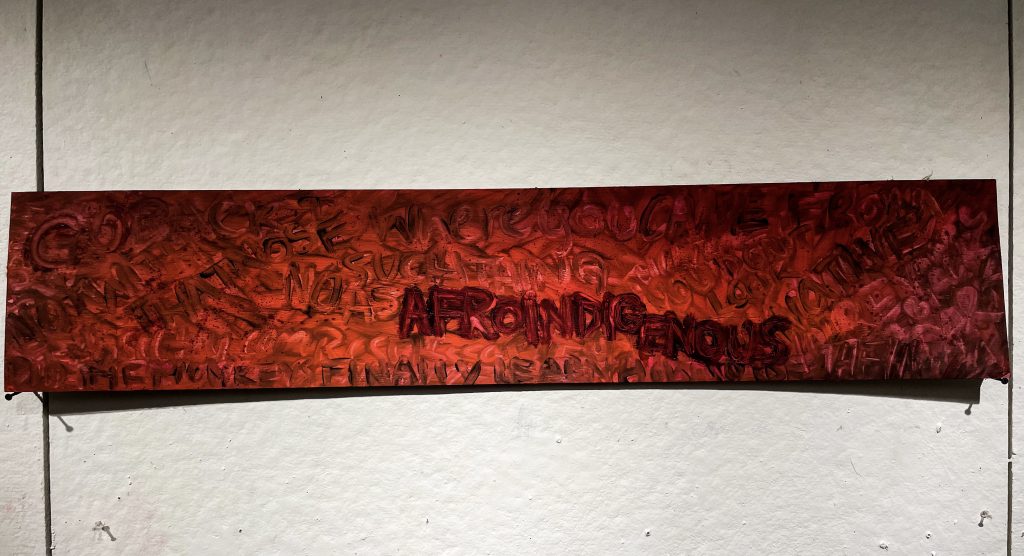

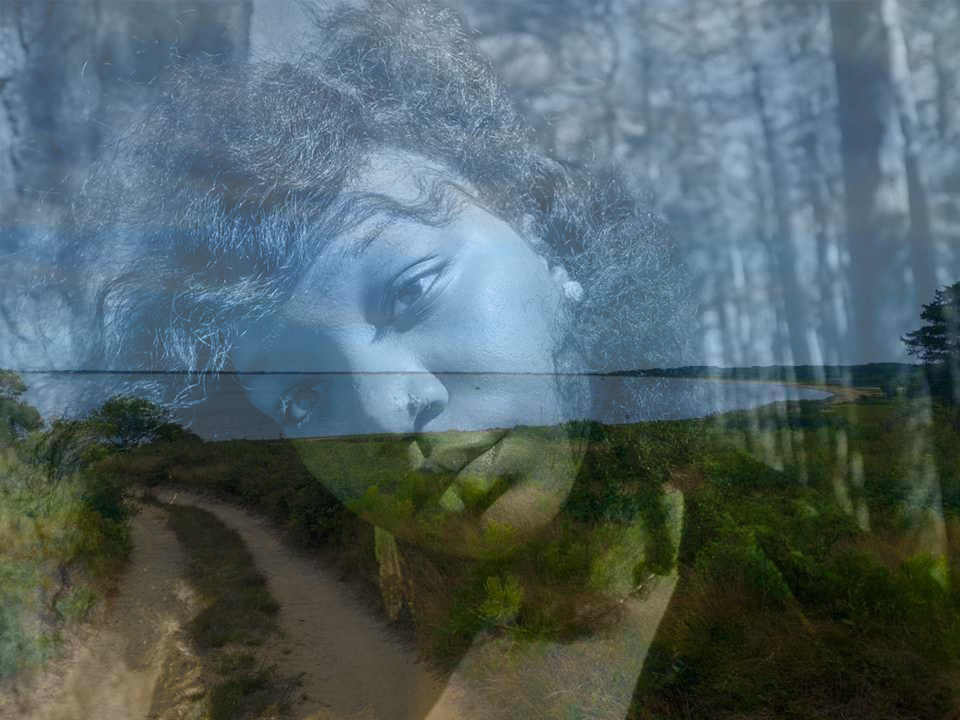
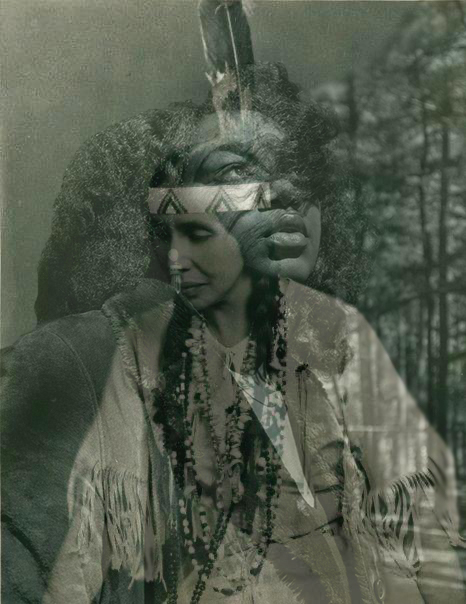
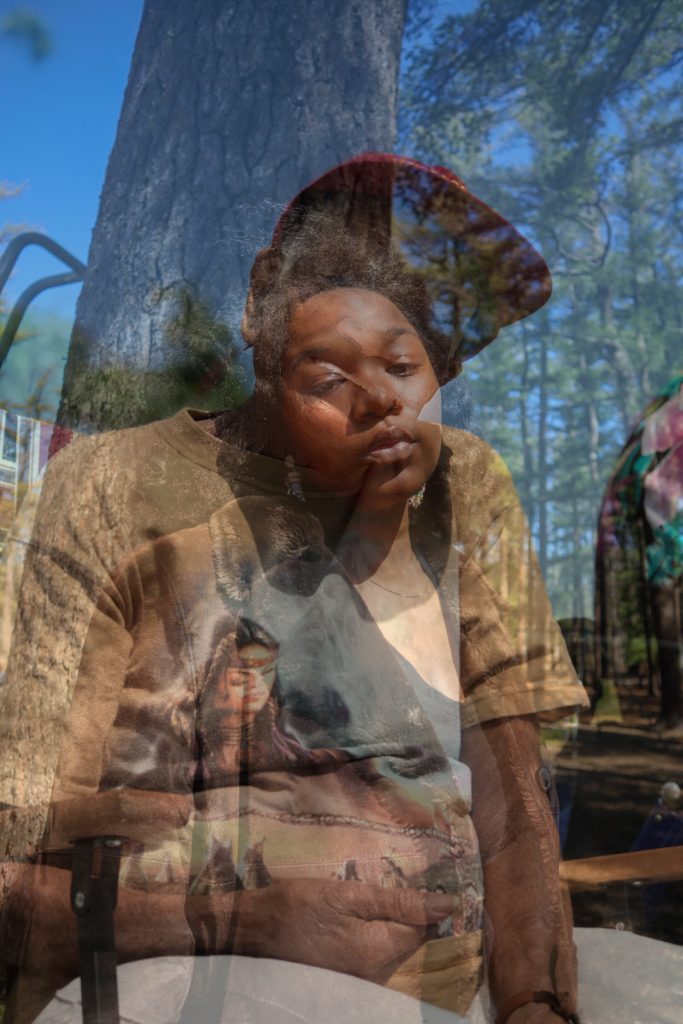
Artist Statement
Most of my life I have walked unapologetically in my Black and Indigenous identity. My family is BLACK. My schools growing up in Harlem were BLACK and the communities I’ve always found myself in were BLACK. I spent every summer of my life at my Wampanoag great grandmothers house on Martha’s Vineyard. My mother immersed me into my Wampanoag heritage and my Black identity was always prevalent. Being both Black and Indigenous I never really understood my identities to be mutually exclusive and exist together, in some spaces I felt Black and in others I felt Wampanoag but struggled with this because although I grew up knowing my heritage, my physical traits labeled me into one racial category. Society uses our physical attributes as indicators of our racial and cultural identities and I knew I was black and other people knew I was Black, but I knew I was Indigenous and other people never believed me. I would get stares, looks, and comments like you don’t look native…
What does Native Look Like? is an artistic series that explores the complexities of how I have grown and continue to grow into navigating my racial and cultural identities as a Black and Wampanoag woman. The overexposure in photographs that depict ancestry, Chappaquiddick Island, and my Wampanoag great-grandmother along with self-portraits. The use of paint in a vibrant shade of red relates to the violent history of bloodshed across identities. This series uses painting and photographs to draw parallels between land, lineage, and language. Blood Quantum, Nuh-tus-a-wese Shining Star, and Writings on the Wall address the hypervisibility, visibility, and invisibility of my identities as they juxtapose how I’ve come to understand my identity and how society projects itself onto my identity. As a series each piece explores the deeply rooted connection between the rich culture, I was immersed in growing up and its relation to the violent history of my ancestry to reconstruct a narrative of beauty, resilience, and survival.
Curatorial Statement
Destiny Arianna’s work is rooted in the self as a way to connect to and interrogate how others approach her Wampanoag and enslaved ancestry. In many of the works, the viewer confronts the artist herself in personal portraiture such as in Blood Quantum or Nuh-tus-a-wese Shining star. Her largest work to date, Blood Quantum, builds upon her previous intensely real portraiture and moves its focus towards the artist herself. Blood Quantum is a 3-way self-portrait made to represent the contrasts between what is visible and invisible in regards to identity. The black-and-white figures represent her indigenous and black identities respectively while the main figure in the middle brings these together. The work relies on composition, narrative details, and color to convey a story. Arianna’s work is no stranger to color. Her work is impossible to ignore on a blank gallery wall, especially her liberal use of red. Her heavy use of red serves to call attention to identities that are too often ignored while also serving as a metaphor for things such as blood in Writings on the Wall. Arianna’s works emphasize materiality, whether using oil paint, acrylic, or photography to tell a certain story. In Nuh-tus-a-wese Shining Star she overlays photographs of herself with Indigenous land and people. Nutushewese means “I am called” and Arianna’s Native American name is “Shining Star.” Other works such as Writings on the Wall use meaning through materiality as a representation of something else, namely red paint as blood. Arianna’s work seamlessly uses aesthetic to convey meaning, showing the viewer instead of telling them, as great artists do.
–Ellery Harkness
